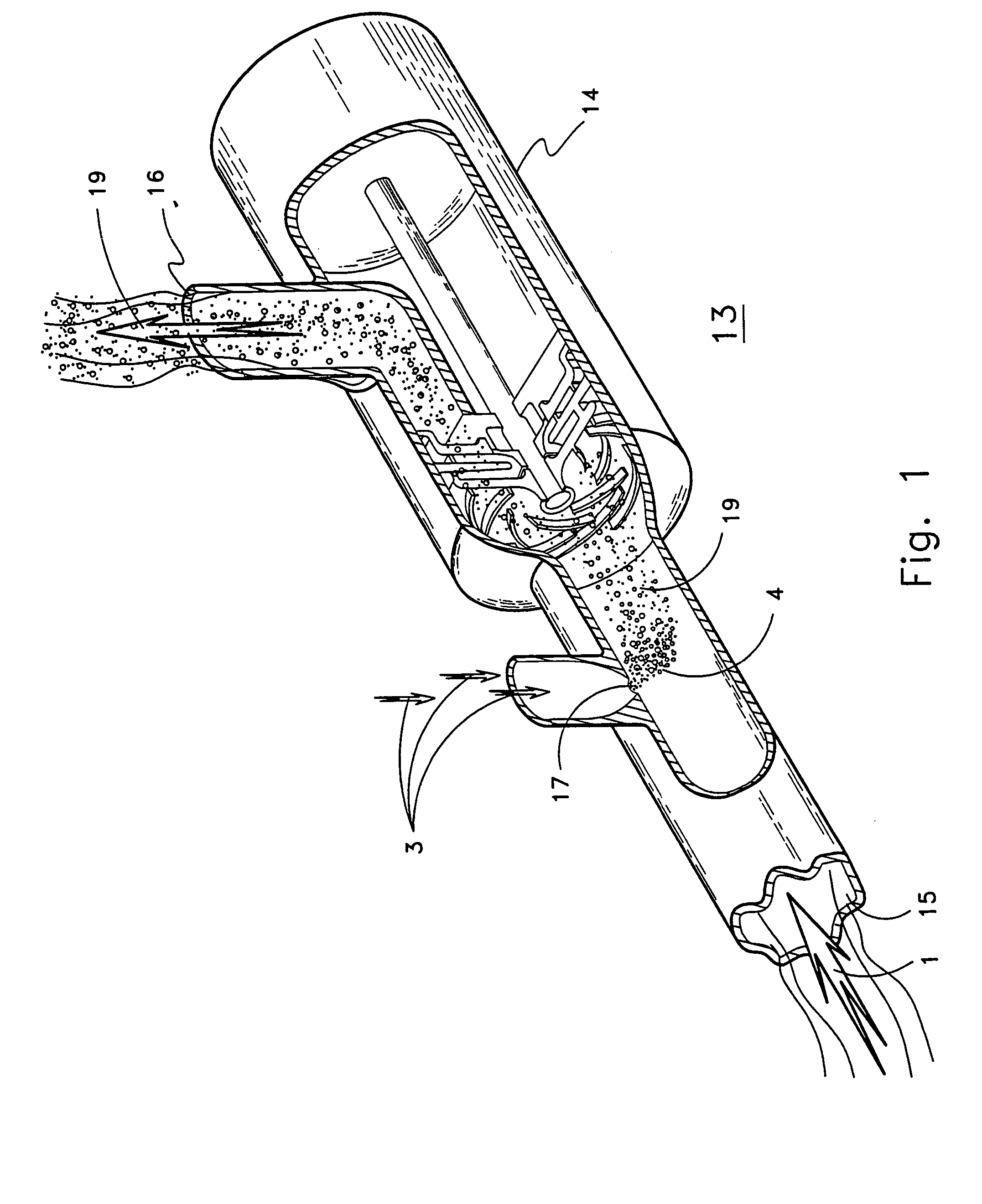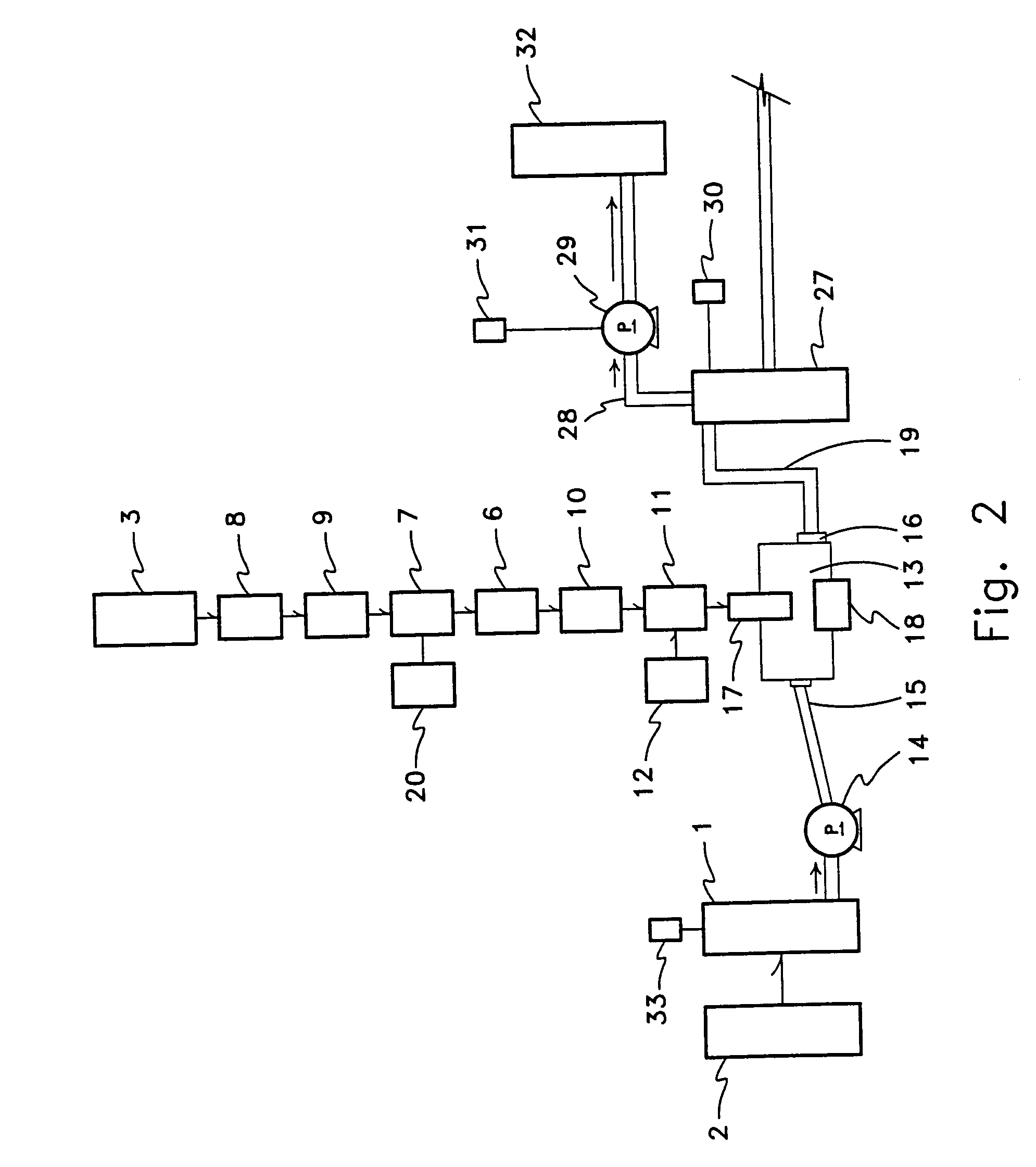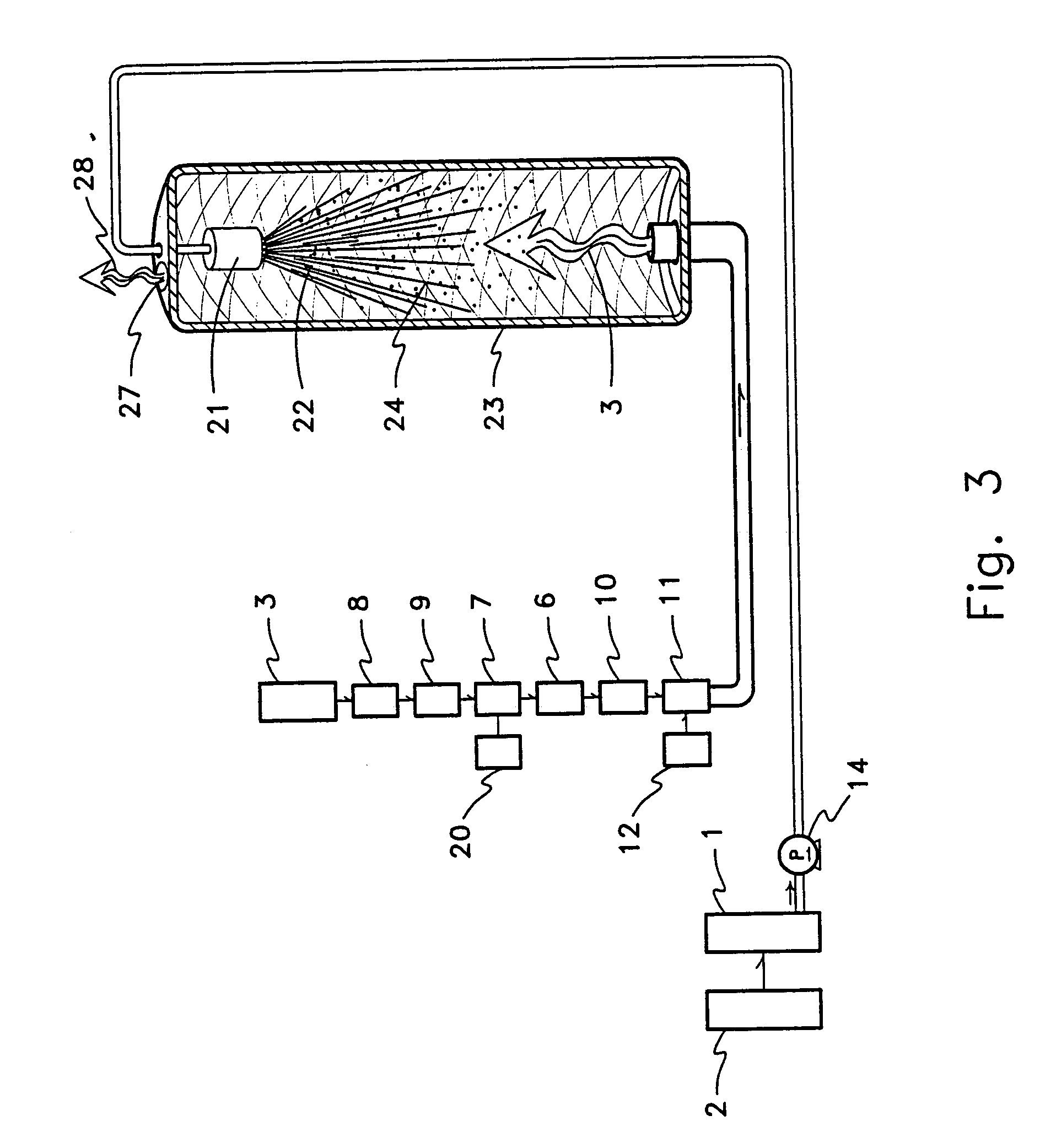Method of reducing materials contained in juice
a technology of reducing materials and juice, applied in the direction of oxidation/reduction purification, alkaline earth metal compound purification, separation process, etc., can solve the problems of high colorization, affecting quality or quantity, sugar substances, etc., and achieve the effect of increasing the interface area
- Summary
- Abstract
- Description
- Claims
- Application Information
AI Technical Summary
Benefits of technology
Problems solved by technology
Method used
Image
Examples
example 1
[0094]Juice was obtained by conventional tower diffusion of sugar beet cossettes. A control group and an experimental group each consisting of six substantially identical 500 mL aliquots of the diffusion juice were generated. Each aliquot within the control group and the experimental group was analyzed to ascertain the pH value. As to each aliquot of the diffusion juice in the control group the pH value was about 6.3. Each aliquot within the control group without any further treatment was titrated to an 11.2 pH endpoint with a solution of 50% wt. / vol. caustic soda. Each aliquot within the experimental group was treated in accordance with the invention after which the pH of each aliquot was ascertained and each experimental aliquot titrated in substantially identical fashion to the control group to an 11.2 pH endpoint with a solution of 50% wt. / vol. caustic soda.
[0095]The results are set out in Table 1 below. As can be understood from the table each aliquot of juice prior to any trea...
example 2
[0098]Juice was obtained by conventional tower diffusion of sugar beet cossettes. A control group and an experimental group each consisting of five substantially identical 500 mL aliquots of the diffusion juice were generated. Each aliquot within the control group and the experimental group was analyzed to ascertain the pH value. As to each aliquot of the diffusion juice in the control group the pH value was about 6.1. Each aliquot within the control group without any further treatment was titrated to an 11.2 pH endpoint with a solution of 30 brixs milk of lime. Each aliquot within the experimental group was treated in accordance with the invention after which the pH of each aliquot was ascertained and each experimental aliquot titrated in substantially identical fashion to the control group to an 11.2 pH endpoint with a solution of 30 brixs milk of lime.
[0099]The results are set out in Table 2 below. As can be understood from the table each aliquot of juice prior to any treatment h...
PUM
 Login to View More
Login to View More Abstract
Description
Claims
Application Information
 Login to View More
Login to View More - R&D
- Intellectual Property
- Life Sciences
- Materials
- Tech Scout
- Unparalleled Data Quality
- Higher Quality Content
- 60% Fewer Hallucinations
Browse by: Latest US Patents, China's latest patents, Technical Efficacy Thesaurus, Application Domain, Technology Topic, Popular Technical Reports.
© 2025 PatSnap. All rights reserved.Legal|Privacy policy|Modern Slavery Act Transparency Statement|Sitemap|About US| Contact US: help@patsnap.com



